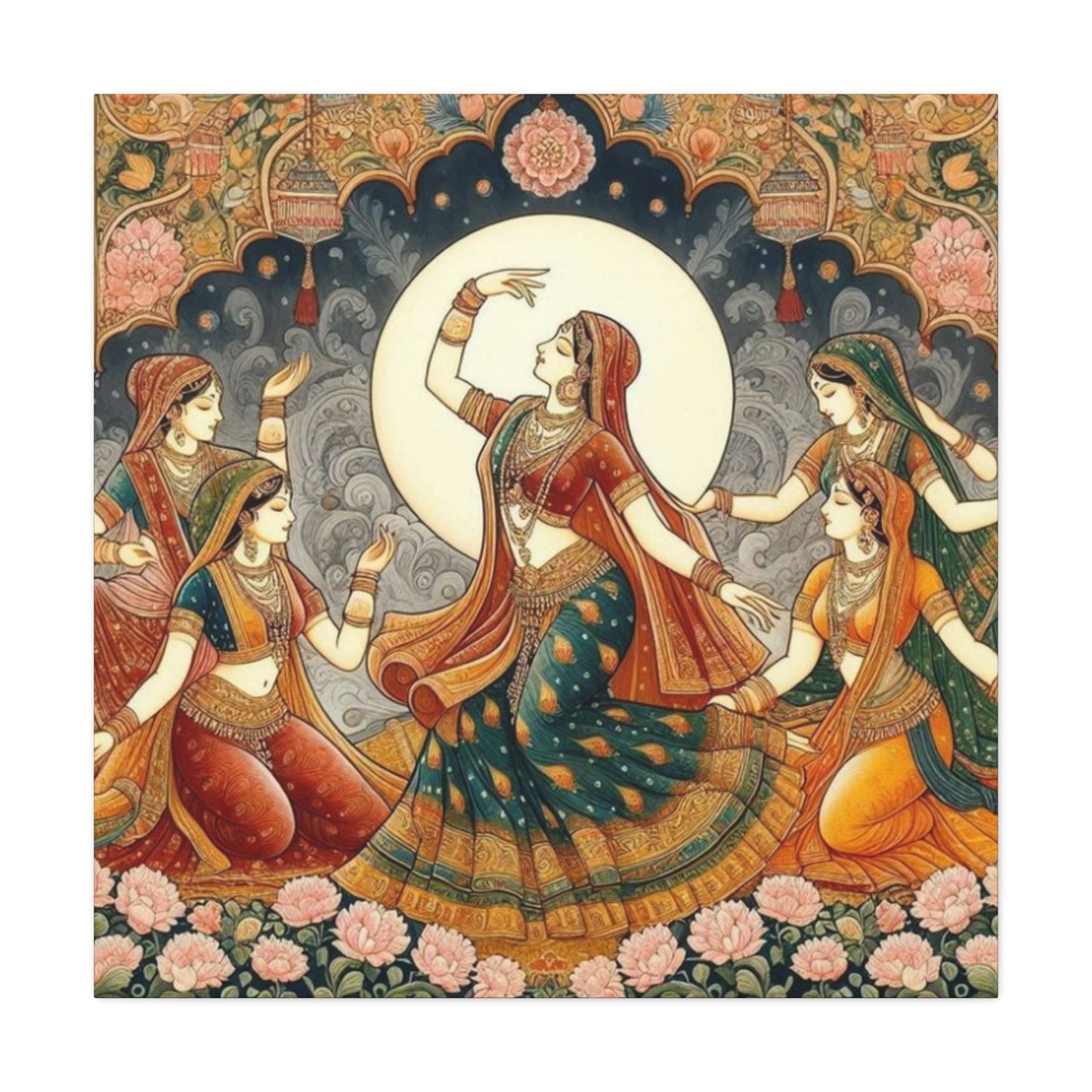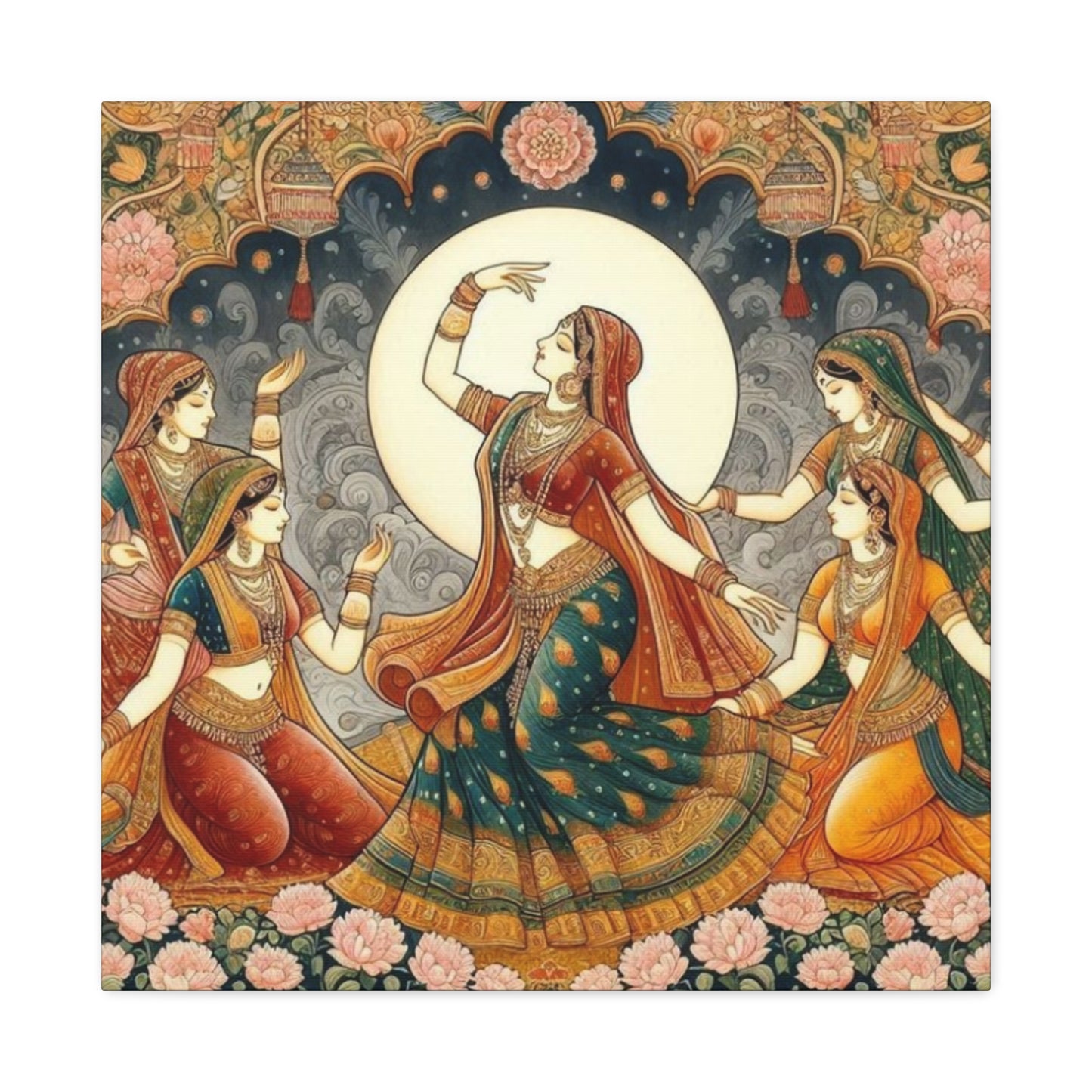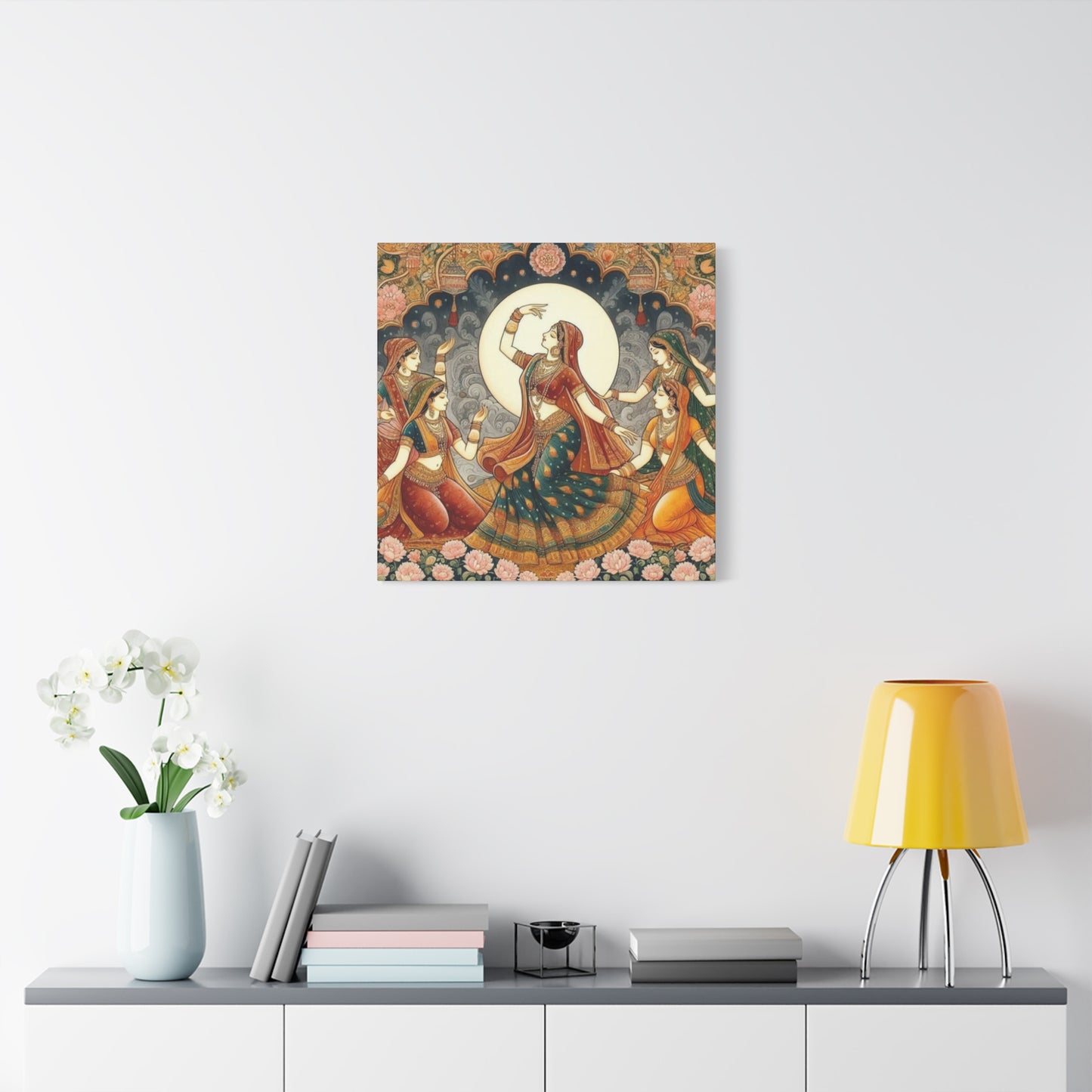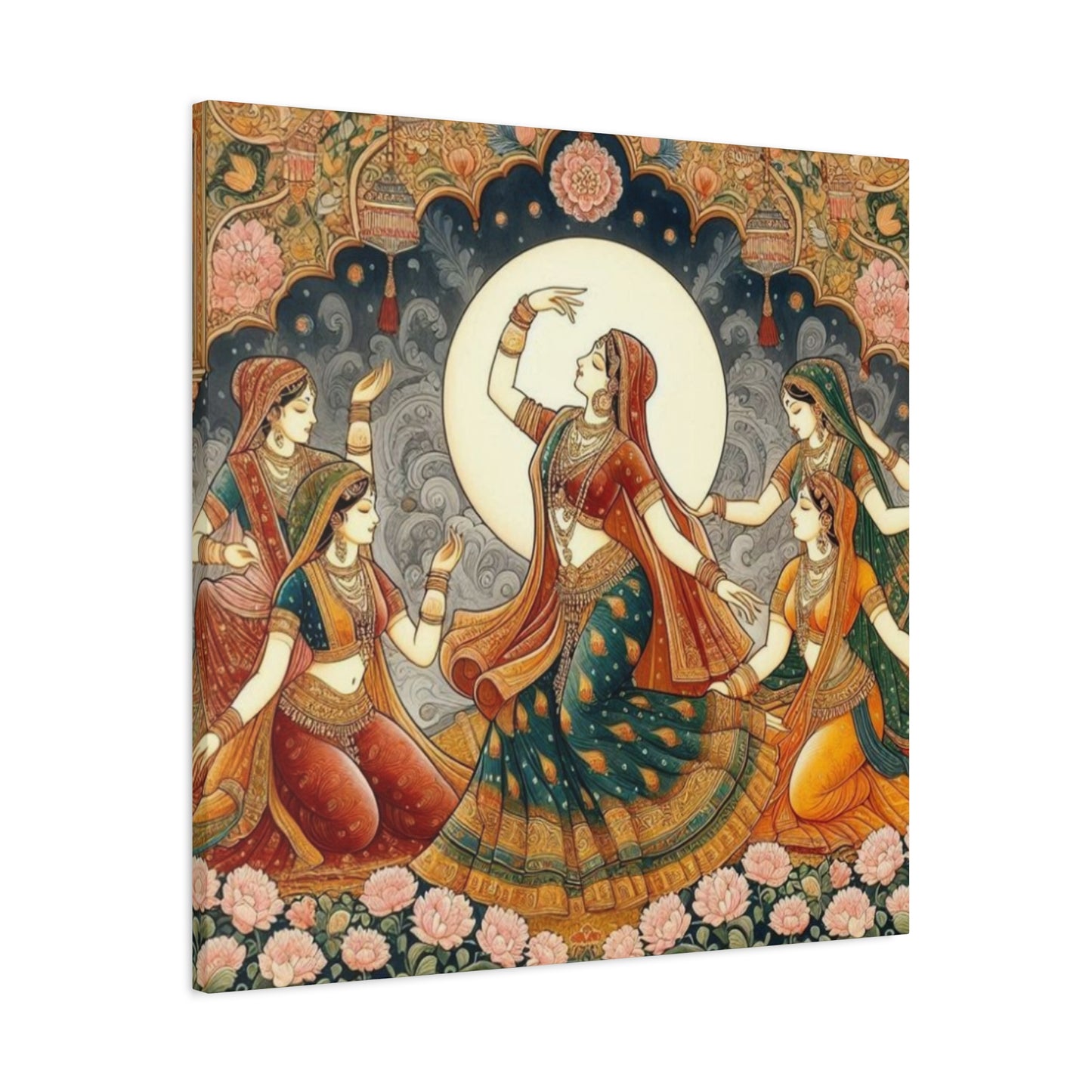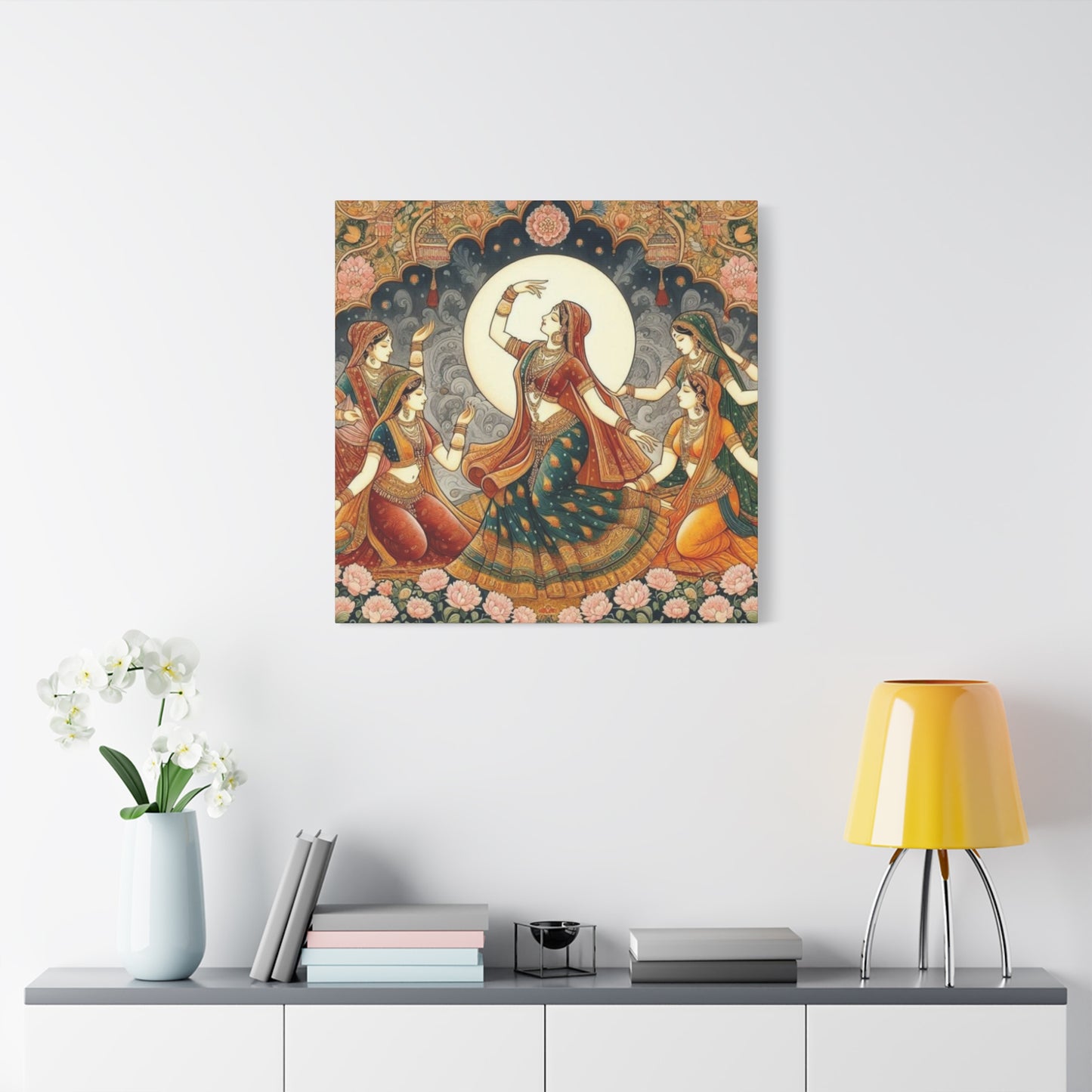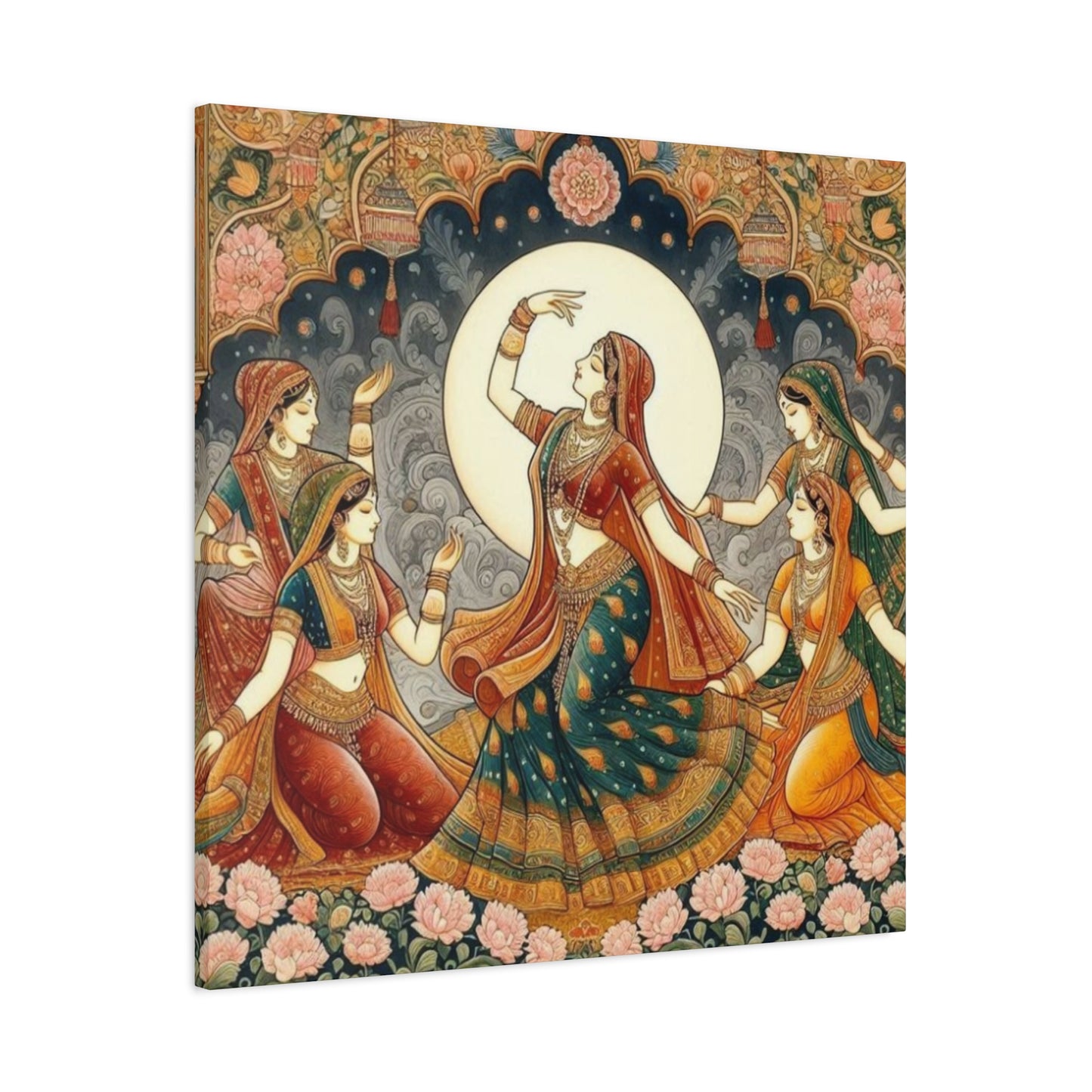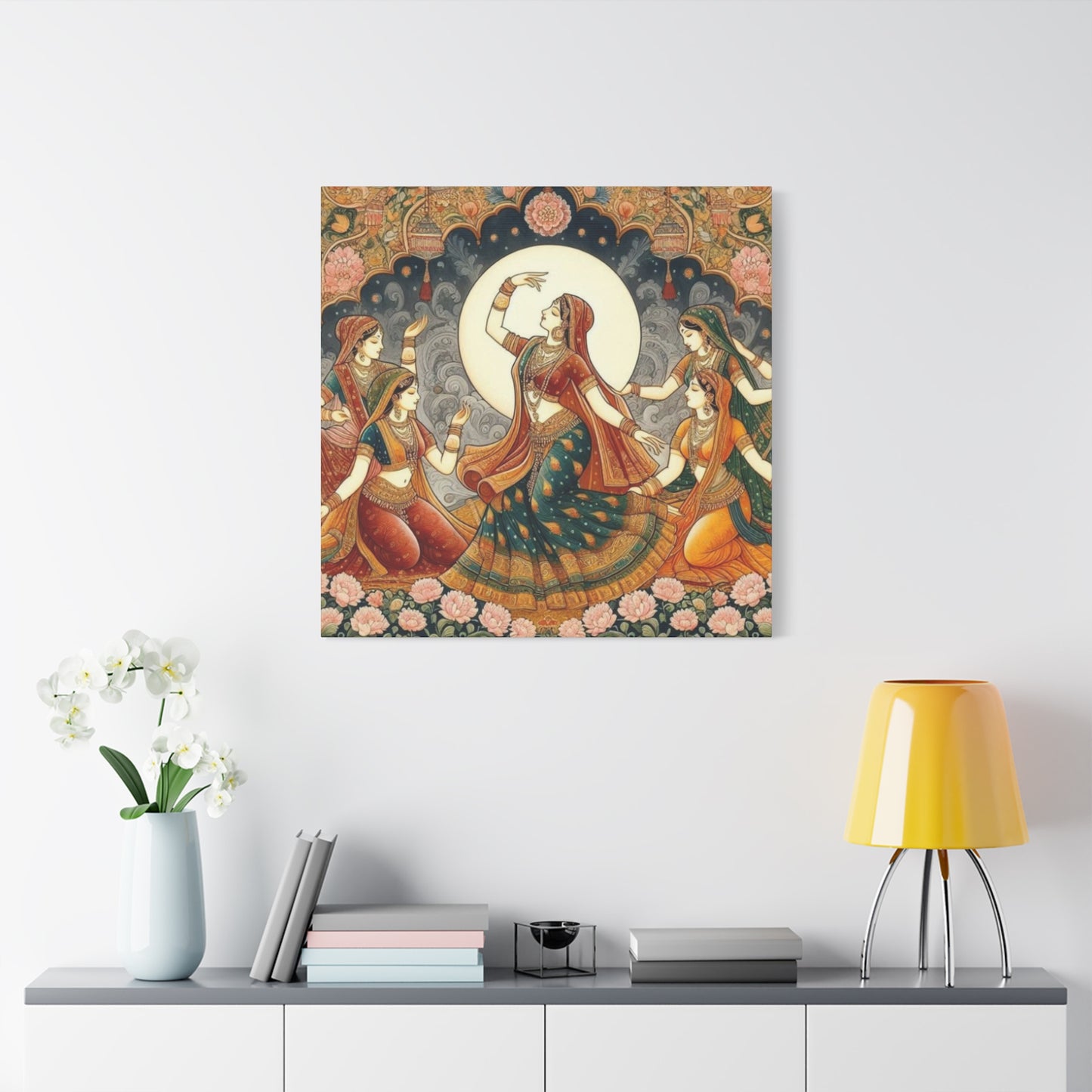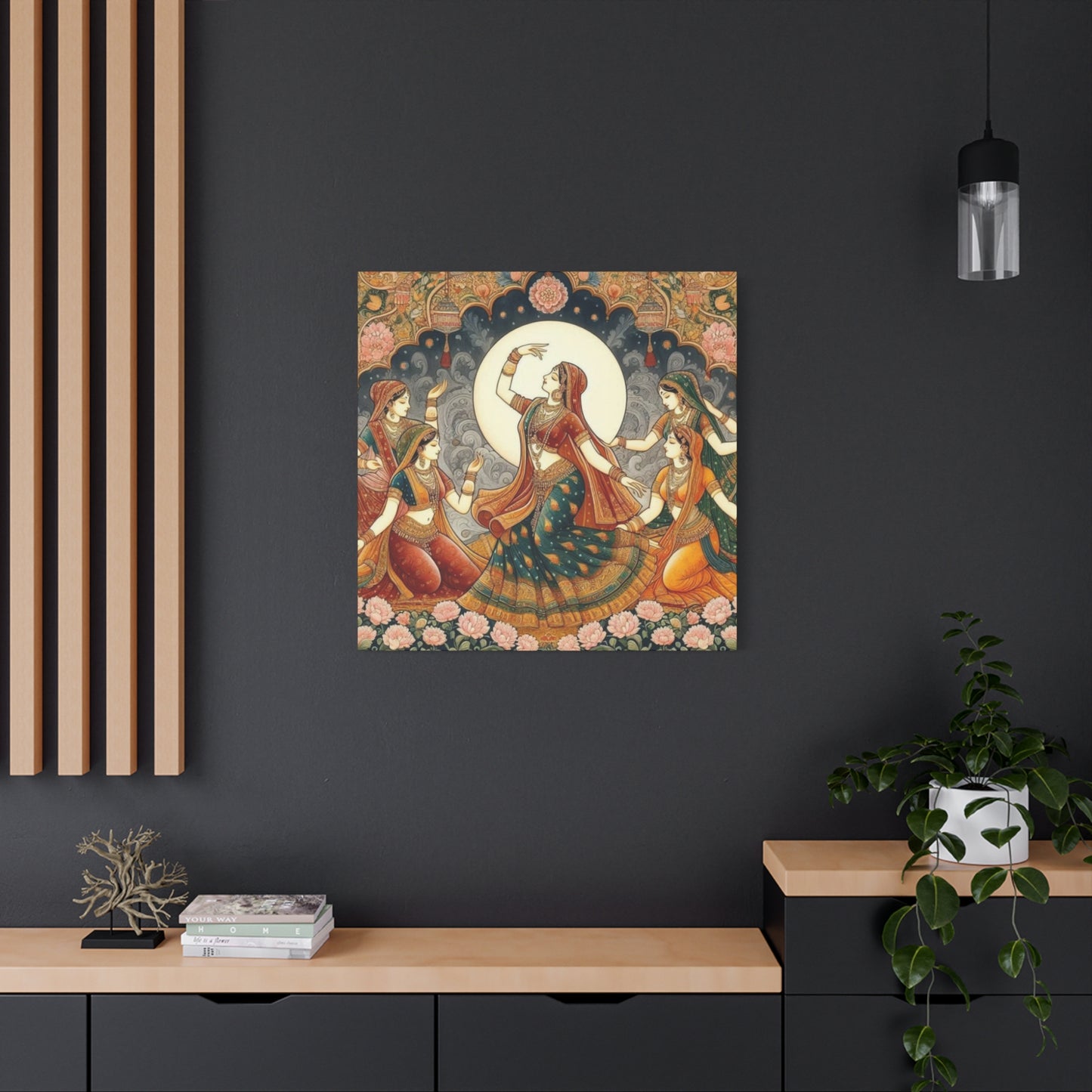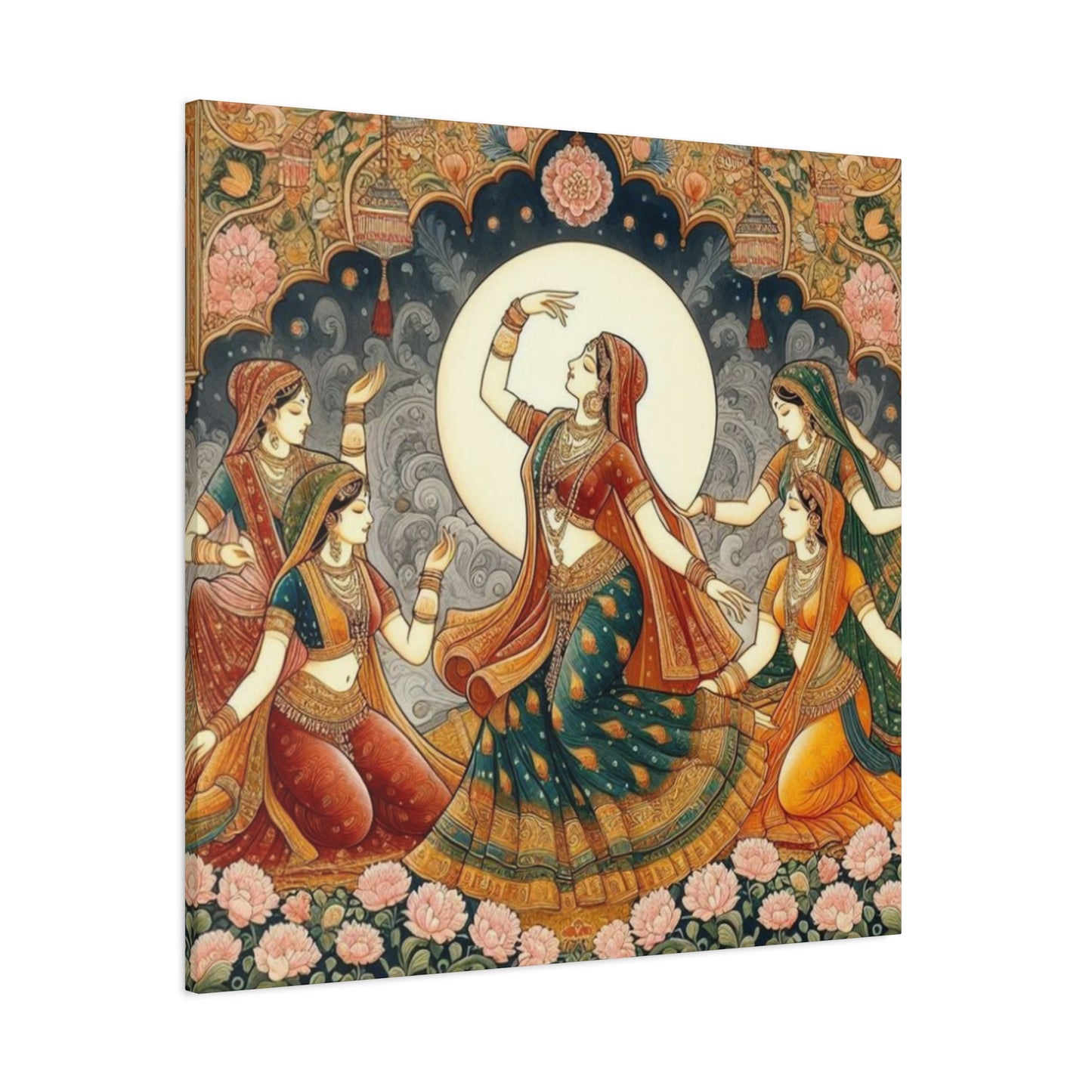Honoring Heritage with Grace: Stunning Dance Queen Wall Art for Timeless Elegance
The magnificent tradition of Indian dance has captivated audiences for centuries, with its intricate movements, expressive storytelling, and deep cultural significance. When these graceful performances are captured in visual form, they create stunning pieces that bring the essence of Indian culture into contemporary homes and establishments. Dancing Indian queen wall art represents more than mere decoration; it serves as a bridge between ancient traditions and modern artistic expression.
These artistic creations showcase the elegance and power of Indian queens through dance, depicting their regal presence while celebrating the rich tapestry of Indian performing arts. From classical Bharatanatyam to the expressive Kathak, each dance form carries its own unique characteristics that artists skillfully translate into visual masterpieces. The flowing garments, intricate jewelry, and graceful poses of dancing queens create compelling focal points that transform any environment.
The appeal of these artistic pieces extends beyond their aesthetic value. They represent a connection to cultural roots, serving as conversation starters and educational tools that introduce viewers to the depth and beauty of Indian traditions. Whether displayed in homes, offices, cultural centers, or galleries, dancing Indian queen wall art creates an atmosphere of sophistication and cultural appreciation.
Modern interpretations of these classical themes often incorporate contemporary artistic techniques while maintaining respect for traditional elements. Artists skillfully blend vibrant colors, dynamic compositions, and detailed craftsmanship to create pieces that resonate with both traditional art enthusiasts and contemporary collectors. The result is artwork that honors the past while speaking to present-day audiences.
The versatility of dancing Indian queen wall art allows it to complement various decorative styles. Whether incorporated into traditional settings that emphasize cultural authenticity or integrated into modern environments seeking cultural depth, these pieces adapt beautifully to their surroundings while maintaining their distinctive character and impact.
Exploring Diverse Styles of Indian Queen Dance Wall Art
The world of Indian queen dance art encompasses numerous artistic styles, each offering unique interpretations of classical themes. Traditional paintings often feature realistic portrayals with meticulous attention to costume details, facial expressions, and hand gestures that are fundamental to Indian dance forms. These works typically employ rich, saturated colors and gold accents that reflect the opulence associated with royal courts.
Contemporary artists have embraced abstract interpretations, using bold strokes and simplified forms to capture the essence of movement and emotion. These modern approaches often focus on the flow and rhythm of dance, creating dynamic compositions that suggest motion even in static form. Geometric patterns and stylized figures allow viewers to experience the energy of dance through artistic interpretation rather than literal representation.
Watercolor techniques bring a delicate, ethereal quality to dancing queen subjects. The soft blending of colors creates dreamlike effects that emphasize the graceful, flowing nature of classical Indian dance. These pieces often feature subtle gradations and transparent layers that add depth and movement to the compositions.
Digital art has opened new possibilities for creating dancing Indian queen wall art. Artists can experiment with lighting effects, color combinations, and compositional elements that might be challenging to achieve with traditional media. Digital techniques allow for precise control over details while enabling artists to create multiple variations and color schemes from a single composition.
Mixed media approaches combine various materials and techniques to create textured, multi-dimensional pieces. Artists might incorporate fabric elements, metallic accents, or three-dimensional components that add tactile interest and visual depth. These works often bridge the gap between painting and sculpture, creating unique pieces that engage viewers on multiple sensory levels.
Photography-based art captures actual dancers in motion, then transforms these images through various artistic processes. This approach maintains authentic movement quality while allowing for creative interpretation through color manipulation, compositing, or artistic filtering techniques.
Strategic Placement of Dancing Indian Queen Wall Art
The placement of dancing Indian queen wall art significantly impacts its visual effect and the overall atmosphere of a room. Living areas benefit greatly from these dramatic pieces, particularly when positioned as focal points above seating areas or entertainment centers. The dynamic nature of dance art creates energy and movement in gathering spaces, making them ideal for areas where people socialize and relax.
Entryways and foyers provide excellent opportunities to make strong first impressions with dancing queen art. These pieces immediately communicate cultural appreciation and artistic sophistication to guests while setting the tone for the entire home. The dramatic nature of dance subjects creates memorable visual impact in these transitional areas.
Dining areas can be enhanced by the celebratory nature of dance art. The festive and cultural aspects of dancing queens create an atmosphere of celebration and cultural richness that complements shared meals and gatherings. Consider pieces that incorporate warm colors to create inviting, comfortable dining environments.
Bedrooms can benefit from more subtle or intimate interpretations of dancing queen themes. Softer color palettes and gentler compositions work well in these personal retreats, providing cultural connection without overwhelming the restful nature of sleeping areas.
Home offices and study areas can be inspired by the discipline and dedication represented in classical dance. The focus and precision required for dance mastery can serve as motivational elements in work environments, while the cultural richness adds depth and interest to professional settings.
Hallways and corridors provide opportunities to create gallery-like displays of multiple pieces, allowing viewers to experience the progression of movement or different interpretations of dance themes. These transitional areas can accommodate series or collections that might be overwhelming in smaller, more intimate rooms.
Stairwells offer unique vertical display opportunities where the ascending nature of the architecture complements the upward, flowing movements often depicted in dance art. The natural sight lines in these areas can be enhanced by thoughtfully positioned pieces that draw the eye upward.
Incorporating Vibrant Colors in Indian Queen Dance Art
Color plays a crucial role in Indian queen dance art, with traditional palettes drawing from the rich spectrum of colors significant in Indian culture. Deep jewel tones such as emerald green, sapphire blue, and ruby red create dramatic impact while honoring traditional associations with prosperity, spirituality, and passion. These colors work particularly well in formal areas where sophistication and cultural depth are desired.
Golden accents and warm metallic tones reference the ornate jewelry and accessories traditional to Indian dance costumes. Gold leaf applications or metallic paints can add luxury and authenticity to pieces while creating visual interest through their reflective properties. These elements work especially well when combined with warm lighting that enhances their luminous qualities.
Saffron and ochre tones connect to spiritual and cultural traditions while providing warm, earthy balance to more vibrant elements. These colors work well in meditation areas or quiet retreats where the spiritual aspects of dance are emphasized over the performance elements.
Bright magenta and fuchsia represent the celebratory aspects of dance and festival traditions. These bold colors create energy and excitement, making them excellent choices for entertainment areas or children's rooms where vibrant, joyful atmosphere is desired.
Turquoise and teal provide cooling balance to warmer elements while referencing traditional color combinations found in Indian textiles and decorative arts. These colors work well in areas where a sense of calm and balance is important, such as bedrooms or meditation areas.
Purple and violet tones suggest royalty and majesty, making them particularly appropriate for queen-themed artwork. These colors add sophistication and dignity to pieces while maintaining connection to traditional royal imagery and symbolism.
Contemporary color interpretations might include monochromatic schemes or unexpected color combinations that honor traditional themes while appealing to modern aesthetic preferences. Black and white treatments can emphasize form and movement while maintaining dramatic impact in minimalist or contemporary settings.
Budget-Conscious Dancing Indian Queen Wall Art Solutions
Creating stunning displays of Indian queen dance art doesn't require significant financial investment. Digital prints of museum-quality originals provide access to masterful works at affordable prices. Many online platforms offer high-resolution reproductions that maintain the detail and color accuracy of original pieces while making them accessible to broader audiences.
Print-on-demand services allow customers to choose specific sizes and materials that fit both their budget and display requirements. Canvas prints provide texture and presence similar to original paintings, while paper prints offer economical options for those experimenting with different pieces or creating temporary displays.
Poster-sized reproductions can create dramatic impact at minimal cost. These large-format pieces work particularly well in contemporary settings where bold, graphic impact is more important than fine detail. Quality framing can elevate these affordable options to create sophisticated displays.
Local art fairs and cultural events often feature emerging artists offering original works at reasonable prices. These venues provide opportunities to discover unique pieces while supporting developing talent. Many artists at these events are willing to discuss commission work or custom pieces within specific budget parameters.
Student artwork from art schools or cultural institutions can provide fresh interpretations of traditional themes at accessible prices. These pieces often bring contemporary perspectives to classical subjects while supporting educational programs and emerging artists.
Art rental programs allow individuals to enjoy quality pieces without the commitment of purchase. These services are particularly valuable for those who enjoy changing their displays regularly or who want to experience different pieces before making purchase decisions.
Group purchasing or art investment clubs can make higher-quality pieces more accessible by sharing costs among multiple participants. These arrangements work well for offices, community centers, or groups of friends who share similar aesthetic preferences.
DIY reproduction projects using quality printing services can create custom pieces tailored to specific color schemes or size requirements. With access to high-resolution images and quality printing equipment, individuals can create personalized versions of favorite pieces at reasonable costs.
Creating Personal Dancing Indian Queen Wall Art Projects
Personal creation of dancing Indian queen wall art offers opportunities for customization and artistic expression while maintaining cultural authenticity. Beginners can start with simple sketching exercises, studying photographs of classical dance poses and practicing the flowing lines and graceful curves characteristic of Indian dance movements. Regular practice develops understanding of proportions and movement quality essential to successful dance art.
Watercolor techniques provide forgiving media for experimenting with color blending and atmospheric effects. The transparency of watercolors naturally creates the flowing, ethereal qualities associated with dance movement. Students can practice wet-on-wet techniques to achieve soft, blended backgrounds while using more controlled applications for detailed costume and jewelry elements.
Collage techniques allow artists to incorporate authentic materials such as fabric scraps, decorative papers, or metallic elements that reference traditional costume components. These mixed-media approaches can create rich, textured pieces that engage viewers through both visual and tactile elements.
Digital art creation using tablets and stylus tools provides precise control over details while allowing for easy experimentation with different color schemes and compositions. Many applications include traditional brush simulations that can replicate watercolor, oil paint, or pencil techniques while providing the flexibility of digital editing and adjustment.
Photography-based projects can capture local dancers or cultural performers, then apply artistic filters or editing techniques to create unique interpretations. These projects often result in authentic movement quality while providing opportunities to support local cultural communities.
Stencil techniques allow for creation of consistent, repeating elements while maintaining handmade character. Artists can create custom stencils of dance poses, costume elements, or decorative motifs that can be combined in various compositions. This approach works well for creating coordinated series or for incorporating dance themes into larger decorative schemes.
Fabric painting projects can create wall hangings that incorporate textile traditions alongside visual art. These pieces can reference traditional fabric arts while providing unique display options that add textural interest to walls.
Community art projects that involve multiple participants can create large-scale installations or series that celebrate dance traditions while building cultural connections. These collaborative efforts often result in pieces that reflect diverse interpretations while maintaining thematic unity.
Understanding Symbolic Elements in Indian Queen Dance Art
The rich symbolism embedded in Indian dance translates powerfully into visual art, with each element carrying cultural and spiritual significance. Hand gestures, known as mudras, form a complex language of communication that dancers use to convey specific meanings, emotions, and narrative elements. Artists who understand these symbolic meanings can incorporate them thoughtfully into their work, creating pieces that communicate on multiple levels.
Facial expressions in classical Indian dance convey nine fundamental emotions, each with specific characteristics and cultural associations. Artists who master these expressions can create pieces that communicate specific moods or stories, allowing viewers to connect emotionally with the artwork even without understanding the complete narrative context.
Costume elements carry deep symbolic meaning, with colors, patterns, and accessories each contributing to the overall message of the piece. Traditional jewelry placement, fabric draping, and ornamental details all have specific cultural significance that informed artists can incorporate authentically into their work.
The positioning of the body and limbs in dance poses often references spiritual or mythological concepts. Understanding these connections allows artists to create pieces that honor traditional meanings while making them accessible to contemporary audiences. The circular movements common in many Indian dance forms represent cyclical concepts of time, life, and spiritual progression.
Architectural elements that often appear as backgrounds in dance art reference temple and palace settings where many classical dances originated. These environmental details help establish cultural context while adding visual depth and authenticity to compositions.
Floral and natural motifs frequently incorporated into dance art connect to seasonal celebrations, religious observances, and natural cycles that form important parts of Indian cultural traditions. Artists can use these elements to create seasonal variations or to emphasize specific cultural connections.
Animal symbolism appears frequently in dance themes, with each creature carrying specific cultural associations. Peacocks represent beauty and grace, while elephants symbolize wisdom and strength. Understanding these symbolic relationships allows artists to create more meaningful and culturally authentic pieces.
The use of geometric patterns and mandala-like compositions reflects spiritual and mathematical concepts important to Indian philosophy and aesthetics. These structural elements can provide underlying organization for compositions while contributing to their cultural authenticity and spiritual depth.
Harmonizing Indian Queen Art with Traditional Decorative Elements
Successfully integrating dancing Indian queen wall art with traditional decorative elements requires understanding of cultural aesthetics and design principles. Traditional Indian decorative arts emphasize rich colors, intricate patterns, and layered visual complexity that can complement dance-themed artwork when thoughtfully coordinated.
Textile elements such as silk wall hangings, embroidered panels, or traditional rugs can provide contextual support for dance art while adding textural variety to displays. The key is achieving balance between different elements without creating visual competition or overwhelming the primary artwork.
Brass and copper accessories reference traditional materials used in Indian decorative arts and can create cohesive displays when positioned near dance artwork. Decorative plates, vessels, or sculptural elements in these metals can echo the golden tones often found in dance costumes while adding three-dimensional interest to wall displays.
Wooden furnishings with carved details or traditional joinery techniques provide authentic contextual support for dance art. Dark wood tones create sophisticated backgrounds that allow colorful artwork to stand out while maintaining cultural cohesion throughout the display area.
Traditional lighting elements such as hanging lanterns or decorative lamps can enhance the atmospheric quality of dance art displays. Warm, diffused lighting emphasizes the golden tones often found in these pieces while creating ambiance that supports the celebratory nature of dance themes.
Carved architectural elements or decorative screens can create backdrop effects that enhance dance artwork without competing for attention. These elements should be positioned carefully to support rather than overwhelm the primary visual focus of the dance pieces.
Temple bells, decorative mirrors, or traditional ceremonial objects can be incorporated as accent elements that support the cultural themes without distracting from the primary artwork. These pieces work best when clustered thoughtfully rather than scattered randomly throughout the display area.
Plant elements such as jasmine, lotus, or other flowers significant in Indian culture can provide living accents that change seasonally while maintaining thematic consistency. These natural elements can soften the impact of elaborate decorative schemes while adding fragrance and organic movement to static displays.
Professional Framing Techniques for Dancing Indian Queen Wall Art
Proper framing significantly impacts the presentation and longevity of dancing Indian queen wall art. Traditional gold or ornate frames can enhance the regal qualities of queen-themed pieces while providing visual weight that balances dramatic subject matter. These frames work particularly well with realistic paintings or highly detailed works where the elaborate frame complements rather than competes with the artwork.
Contemporary frame styles offer clean, minimal presentations that allow artwork to speak without distraction. Simple wood or metal frames work well with modern interpretations of dance themes, particularly abstract or stylized pieces where the frame should support rather than enhance the visual impact.
Matting choices significantly affect the final presentation of framed pieces. Traditional cream or off-white mats provide neutral backgrounds that enhance most color palettes, while colored mats can be chosen to echo specific tones within the artwork. Multiple mat layers can create sophisticated presentations that add visual depth and importance to pieces.
Conservation framing techniques protect valuable artwork from environmental damage while ensuring long-term preservation. UV-filtering glass or acrylic prevents fading from sunlight exposure, while acid-free materials prevent chemical deterioration over time. These techniques are particularly important for original artwork or limited edition prints.
Custom frame sizing allows for optimal presentation of pieces that may not conform to standard dimensions. This is particularly important for traditional Indian art formats or contemporary pieces created in non-standard proportions. Custom sizing ensures that the artwork is presented without cropping or awkward spacing.
Float mounting techniques create the impression that artwork is suspended within the frame, adding dimensional interest and contemporary sophistication to the presentation. This technique works particularly well with pieces that have interesting edge treatments or with artwork created on non-traditional materials.
Shadow box framing accommodates three-dimensional elements or mixed-media pieces that require depth for proper presentation. This technique allows for incorporation of textile elements, sculptural components, or layered compositions that extend beyond the typical flat presentation of traditional framing.
Group framing strategies for series or collections require careful planning to achieve visual cohesion while allowing each piece to maintain its individual impact. Consistent frame styles with varying sizes can create dynamic displays, while uniform sizing with varied frame treatments can emphasize the content differences between pieces.
Integrating Dancing Indian Queen Art in Contemporary Settings
Modern residential and commercial environments can benefit greatly from the cultural richness and visual drama of dancing Indian queen wall art. The key to successful integration lies in understanding how traditional themes can complement contemporary design aesthetics without creating cultural appropriation or superficial decoration.
Minimalist contemporary interiors can be dramatically enhanced by a single, well-chosen piece of dance art that serves as a focal point and cultural anchor. The clean lines and neutral palettes common in modern design provide perfect backdrops for the rich colors and dynamic movement depicted in dance art. This approach allows the artwork to command attention while maintaining the simplified aesthetic preferences of contemporary style.
Industrial design elements such as exposed brick, metal fixtures, or concrete surfaces can create interesting contrasts with the flowing, organic qualities of dance art. These juxtapositions can be particularly effective in loft apartments, galleries, or commercial spaces where the contrast between hard architectural elements and soft, cultural imagery creates visual tension and interest.
Scandinavian-inspired interiors, with their emphasis on natural materials and clean design, can incorporate dance art as warming, humanizing elements that add cultural depth without compromising the aesthetic's focus on simplicity and functionality. Light wood tones and white walls provide excellent backgrounds for the rich colors typically found in Indian dance artwork.
Mid-century modern furnishings share some aesthetic principles with traditional Indian decorative arts, particularly in their appreciation for bold colors and geometric patterns. The organic curves common in mid-century furniture can echo the flowing movements depicted in dance art, creating visual harmony across different cultural traditions.
Contemporary eclectic approaches allow for more direct combination of cultural elements, where dance art can be part of larger collections that celebrate diverse artistic traditions. These approaches work well for individuals who appreciate cultural fusion and want their living areas to reflect global artistic influences.
Modern commercial applications include hotels, restaurants, cultural centers, and office buildings where dance art can communicate hospitality, cultural sophistication, and artistic appreciation. These environments often benefit from larger-scale pieces or coordinated series that can maintain visual impact across larger architectural spaces.
Art gallery and museum settings require careful consideration of lighting, spacing, and contextual information to present dance art in ways that honor its cultural significance while making it accessible to diverse audiences. These presentations often benefit from educational materials that help viewers understand the cultural context and symbolic meaning of the artwork.
Historical Development of Indian Dance in Artistic Expression
The representation of dance in Indian visual arts traces back thousands of years, with early examples found in temple carvings, manuscript illustrations, and court paintings that documented the central role of dance in religious and cultural life. These historical precedents established artistic conventions that continue to influence contemporary interpretations of dance themes.
Temple sculptures from various periods demonstrate the evolution of artistic techniques for depicting movement in static media. Artists developed sophisticated approaches to suggesting motion through pose, drapery treatment, and compositional arrangement that created convincing impressions of dance even in stone and metal media.
Mughal court paintings introduced new techniques for depicting dance performances, often showing elaborate court entertainments with detailed attention to costume, setting, and audience interaction. These works established traditions for showing dance within social and architectural contexts that continue to influence artistic interpretations.
Colonial period interactions introduced Western artistic techniques and materials to Indian artists, creating hybrid styles that combined traditional subject matter with new technical approaches. These fusion styles often emphasized realistic rendering and perspective systems while maintaining cultural authenticity in subject matter and symbolic content.
The independence movement and subsequent cultural renaissance brought renewed interest in classical dance forms and their artistic representation. Artists of this period often emphasized the spiritual and nationalistic aspects of dance, creating works that celebrated cultural identity and independence.
Contemporary global art movements have influenced current interpretations of dance themes, with artists incorporating abstract expressionism, pop art sensibilities, and conceptual approaches while maintaining connection to traditional cultural meanings. These modern interpretations often appeal to international audiences while preserving cultural authenticity.
Digital age developments have opened new possibilities for documenting and interpreting dance through video, interactive media, and virtual reality applications. These technologies allow for new forms of artistic expression that can capture the temporal and spatial aspects of dance in ways that traditional static media cannot achieve.
The globalization of art markets has increased international appreciation for Indian dance art while creating opportunities for cultural exchange and artistic collaboration. Contemporary artists often work across cultural boundaries while maintaining respect for traditional forms and meanings.
Artistic Techniques for Capturing Dance Movement
Successfully depicting the dynamic nature of dance in static visual media requires specialized artistic techniques that can suggest movement, rhythm, and emotional expression. Understanding these approaches allows artists to create convincing and engaging representations of dance that communicate the essence of performance to viewers.
Line quality plays a crucial role in suggesting movement and energy. Flowing, continuous lines can create sense of motion and grace, while varied line weights can emphasize different aspects of the pose or costume. Artists often use confident, gestural strokes that mirror the confidence and precision required in dance performance.
Color application techniques can enhance the sense of movement through gradual transitions, strategic contrasts, and rhythmic repetition. Warm colors can advance toward viewers while cool colors recede, creating spatial depth that enhances the three-dimensional quality of depicted figures. Color temperature variations can also suggest lighting changes that occur during performance.
Composition strategies that incorporate diagonal elements, asymmetrical balance, and dynamic tension create visual energy that supports the active nature of dance subjects. Artists often use implied lines and directional forces to guide viewers' eyes through the composition in ways that mirror the temporal progression of dance movement.
Drapery treatment becomes particularly important in dance art, as flowing fabric can effectively communicate movement quality and create visual rhythm throughout the composition. Artists study how different fabric weights and textures behave during movement to create convincing representations that enhance rather than contradict the depicted pose.
Background treatment options range from minimal, neutral approaches that focus attention on the figure to elaborate environmental settings that provide cultural context. The choice depends on the artist's intent and the specific requirements of each piece, with successful works achieving balance between figure and environment.
Perspective and foreshortening techniques become crucial when depicting complex dance poses that involve reaching, turning, or jumping movements. Artists must understand anatomical structure and spatial relationships to create convincing representations of three-dimensional movement in two-dimensional media.
Lighting effects can dramatically enhance the theatrical quality of dance art, with dramatic contrasts suggesting stage lighting while softer, more diffused lighting can create atmospheric, dreamlike effects. Understanding how light behaves on moving figures allows artists to create more convincing and visually interesting representations.
Multiple figure compositions require careful orchestration to create unified visual effects while allowing each figure to maintain individual character and movement quality. These complex arrangements often benefit from careful planning and preliminary studies to achieve successful integration of multiple active elements.
Combining Indian Queen Art with Botanical and Floral Elements
The integration of floral and botanical motifs with dancing Indian queen art creates rich, layered compositions that honor traditional decorative approaches while adding natural beauty and symbolic meaning. Traditional Indian art has long incorporated plant elements as both decorative and symbolic components, making this combination culturally authentic and visually appealing.
Lotus blossoms hold particular significance in Indian culture and appear frequently in traditional art as symbols of purity, beauty, and spiritual enlightenment. When incorporated into dance art, lotus motifs can frame figures, create background patterns, or serve as decorative elements that enhance the spiritual dimensions of dance representation. The circular form of lotus blossoms also echoes the circular movements common in many dance forms.
Jasmine flowers, often worn by dancers and associated with beauty and grace, can provide delicate accent elements that connect to authentic dance traditions. These small, star-shaped blossoms work well as repeating pattern elements or as subtle details that add authenticity without overwhelming the primary figures.
Marigold garlands and decorative arrangements frequently appear in cultural celebrations and can be incorporated into dance art as background elements or as accessories worn by depicted figures. The bright orange and yellow colors of marigolds add warmth and festive energy to compositions while maintaining cultural authenticity.
Mango leaf motifs appear in traditional decorative arts as symbols of prosperity and happiness. These distinctive shapes can be used as border elements, background patterns, or architectural details that provide cultural context without competing with the primary dance figures.
Peacock feathers, while technically not botanical, often appear alongside floral elements and carry strong associations with dance, particularly Krishna-themed performances. These colorful, eye-spotted elements can add dramatic visual interest while maintaining cultural appropriateness and symbolic meaning.
Tree motifs, particularly bodhi trees or flowering varieties, can provide vertical compositional elements that balance horizontal dance poses while adding environmental context. These larger botanical elements work well in compositions that include architectural or landscape backgrounds.
Rose patterns, while not traditionally Indian, have been incorporated into Indian decorative arts through historical cultural exchange. When used thoughtfully, rose motifs can add romantic or celebratory elements to dance art while appealing to international audiences familiar with this floral symbolism.
Vine and trailing plant patterns can create flowing, rhythmic elements that echo dance movements while providing visual connection between different areas of complex compositions. These organic curves naturally complement the flowing lines typical of dance poses and costume elements.
Contemporary Artists Specializing in Dancing Indian Queen Art
The current art world includes numerous talented artists who specialize in interpreting Indian dance themes through various contemporary approaches. These creators bring fresh perspectives to traditional subjects while maintaining respect for cultural authenticity and artistic excellence.
Traditional realistic painters continue to create highly detailed works that celebrate the technical mastery and cultural knowledge required to accurately depict classical dance forms. These artists often have extensive knowledge of dance traditions and work closely with performers to ensure accuracy in pose, costume, and expression. Their works serve as important cultural documents while functioning as beautiful artistic expressions.
Abstract expressionist interpreters focus on capturing the emotional and energetic aspects of dance rather than literal representation. These artists use color, form, and composition to convey the feeling and rhythm of dance, creating pieces that communicate the essence of performance through purely visual means. Their works often appeal to viewers who appreciate contemporary art approaches while maintaining connection to cultural themes.
Digital artists working with tablets, computer graphics, and mixed media approaches can experiment with effects and techniques unavailable to traditional media. These creators often produce works that combine photographic elements with painted or drawn components, creating hybrid pieces that can achieve unique visual effects while maintaining cultural authenticity.
Sculptor artists who translate dance themes into three-dimensional media face unique challenges in capturing movement in static materials. Bronze, stone, and mixed media sculptures can achieve powerful emotional impact through pose, expression, and surface treatment, creating pieces that engage viewers from multiple viewing angles.
Textile artists incorporate dance themes into fabric-based media, creating wall hangings, tapestries, and mixed-media pieces that reference the textile traditions important to Indian culture. These works often incorporate traditional fabric techniques while depicting contemporary interpretations of dance subjects.
Photography-based artists capture actual dance performances and transform them through various artistic processes. These creators often work directly with dance companies and individual performers, creating pieces that maintain authentic movement quality while achieving artistic interpretation through cropping, color manipulation, or compositing techniques.
Collaborative artists work with dance communities to create pieces that accurately represent specific regional styles or individual choreographic approaches. These partnerships often result in works that serve both artistic and cultural documentation purposes while supporting ongoing dance traditions.
Emerging artists from art schools and community programs bring fresh perspectives and contemporary techniques to traditional subjects. Many of these creators grew up within Indian cultural communities while receiving contemporary art education, allowing them to bridge traditional knowledge with current artistic approaches.
Enhancing Living Areas with Indian Queen Dance Art
Living rooms and family gathering areas provide ideal settings for displaying dancing Indian queen art, where the celebratory and cultural aspects of these pieces can enhance social environments. The key to successful integration lies in understanding how these dramatic works can complement existing furnishings while creating focal points that encourage conversation and cultural appreciation.
Seating arrangements benefit from thoughtful artwork placement that creates visual anchors without overwhelming conversation areas. Large pieces work well above sofas or sectional seating, while smaller works can be grouped to create gallery walls that maintain visual interest throughout the room. The dynamic nature of dance subjects adds energy to areas where people gather, making these spaces feel more vibrant and engaging.
Color coordination between artwork and existing furnishings requires careful consideration of both dominant and accent colors within the pieces. Many dancing queen artworks feature rich, jewel-toned palettes that can be echoed in throw pillows, rugs, or accent furniture, creating cohesive decorative schemes that feel intentional rather than accidental. Neutral-toned furniture provides excellent backgrounds for colorful artwork, while bold furnishing choices require more careful color balance.
Lighting considerations become particularly important with dance art, as these pieces often feature metallic elements or rich colors that respond dramatically to different lighting conditions. Track lighting or picture lights can enhance the visual impact of individual pieces, while ambient lighting creates overall atmosphere that supports the cultural themes. Dimmer controls allow for adjustment based on different uses of the room and times of day.
Entertainment area integration can be particularly successful, as dance art naturally complements musical and performance activities. Pieces positioned near music systems, instruments, or entertainment centers create thematic consistency while adding cultural depth to leisure activities. The celebratory nature of dance art enhances the festive atmosphere appropriate for entertainment areas.
Furniture arrangement can be influenced by artwork placement, with seating positioned to provide good viewing angles while maintaining comfortable conversation distances. The dramatic nature of dance art often works best when viewers can appreciate the pieces from multiple distances, allowing for both detailed examination and overall visual impact.
Seasonal decoration opportunities arise from the festive nature of many dance themes, allowing for temporary enhancements during cultural celebrations or holiday periods. Additional lighting, floral arrangements, or textile elements can be added to create special displays that honor cultural observances while maintaining year-round aesthetic appeal.
Children's interaction with cultural art in family areas provides educational opportunities that can spark interest in cultural traditions and artistic expression. Age-appropriate discussion about the cultural significance, artistic techniques, and historical context can make these pieces valuable teaching tools that contribute to cultural education within the home environment.
Celebrating Feminine Power Through Dancing Indian Queen Art
Dancing Indian queen art serves as powerful representation of feminine strength, grace, and cultural identity, celebrating the important role of women in preserving and transmitting cultural traditions. These artistic works honor the discipline, skill, and artistic dedication required to master classical dance forms while acknowledging the regal bearing and cultural significance of queen figures in Indian history and mythology.
Historical queen figures depicted in dance art often represent specific rulers or legendary characters who embody ideals of leadership, wisdom, and cultural patronage. These representations connect contemporary viewers to powerful female role models while celebrating the artistic traditions these historical figures supported and maintained. The combination of royal status with artistic accomplishment creates compelling subject matter that appeals to diverse audiences.
Contemporary interpretations of queen themes often emphasize empowerment messages that resonate with modern audiences while maintaining cultural authenticity. Artists may focus on the strength and confidence required for dance performance, the cultural knowledge needed to interpret traditional themes, or the leadership qualities associated with queen figures. These modern approaches can make historical subjects relevant to contemporary viewers.
Dance training and mastery represent significant personal achievement that requires years of dedicated practice, physical conditioning, and cultural study. Artistic representations of this dedication celebrate the commitment required to excel in traditional arts while honoring the teachers and cultural communities that preserve these traditions. The discipline aspect of dance training can serve as inspirational subject matter for viewers pursuing their own challenging goals.
Cultural preservation roles traditionally associated with women in Indian society find expression through dance art that celebrates the transmission of cultural knowledge from one generation to the next. These themes can be particularly meaningful in immigrant communities where cultural continuity requires conscious effort and dedication from community members who serve as cultural ambassadors.
Artistic expression itself becomes a form of empowerment when women control the creation and interpretation of their own cultural representations. Female artists creating dance-themed work often bring perspectives and insights that differ from male interpretations, contributing to more complete and nuanced understanding of women's roles in cultural traditions.
Educational value of these artistic representations extends beyond aesthetic appreciation to include cultural literacy, historical awareness, and artistic understanding. Viewers can learn about dance techniques, cultural symbols, historical contexts, and artistic approaches while enjoying beautiful and inspiring visual experiences.
Role model potential of dancing queen art can be particularly valuable for young women seeking examples of cultural pride, artistic excellence, and personal achievement. These images provide alternatives to contemporary media representations while connecting viewers to traditions that emphasize skill, knowledge, and cultural contribution over superficial attributes.
Incorporating Golden Tones and Precious Color Palettes
The use of gold and jewel tones in dancing Indian queen art reflects both traditional aesthetic preferences and symbolic meanings associated with prosperity, spirituality, and royal status. These rich color palettes create luxurious visual effects while maintaining cultural authenticity and historical accuracy in their references to traditional costume and decorative elements.
Golden accents serve multiple functions in dance art, from highlighting costume details and jewelry elements to creating atmospheric effects that suggest stage lighting or divine radiance. Artists can achieve golden effects through various techniques, including metallic paints, gold leaf applications, or warm color mixtures that create golden impressions. The reflective qualities of actual metallic elements add visual interest and luxury to pieces while creating dynamic effects that change with viewing angle and lighting conditions.
Emerald green tones reference the rich colors traditionally associated with prosperity and nature in Indian culture. These deep, saturated greens work particularly well in costume elements and background details, providing cool balance to warmer golden tones while maintaining the rich color palette characteristic of traditional Indian art. Green tones can also represent the natural world that forms important symbolic elements in many dance narratives.
Sapphire blue colors carry spiritual significance while providing dramatic contrast to golden elements. Deep blues work well for background areas, costume details, or atmospheric effects that suggest night scenes or sacred settings. The combination of blue and gold creates particularly striking visual effects that reference traditional decorative schemes found in temple and palace art.
Ruby red tones add passion and energy to compositions while referencing traditional associations with celebration, love, and artistic expression. These warm, intense colors work well for costume highlights, floral elements, or compositional accents that draw viewer attention to important areas of the artwork. Red tones can also suggest the intensity and dedication required for dance mastery.
Amethyst purple shades suggest royalty and majesty while providing sophisticated color options that appeal to contemporary aesthetic preferences. Purple tones work well in combination with both warm and cool color families, allowing artists to create complex color harmonies that maintain visual interest throughout large or detailed compositions.
Topaz and citrine yellow tones add brightness and festive energy while referencing traditional associations with celebration and enlightenment. These lighter, more luminous colors can be used to create highlights, suggest lighting effects, or provide areas of visual relief within compositions dominated by deeper, more intense colors.
Pearl and silver accents can provide cool metallic options that complement golden elements without competing for attention. These lighter metallic tones work well for jewelry details, fabric highlights, or atmospheric effects that add sophistication without overwhelming the primary color relationships within the composition.
Color balance strategies require careful consideration of proportion, intensity, and placement to achieve harmonious results that enhance rather than compete with the depicted subject matter. Successful pieces typically establish dominant color themes while using accent colors strategically to create visual interest and cultural authenticity.
Conclusion
Dance Queen wall art stands as a radiant tribute to heritage, grace, and timeless elegance. These stunning pieces capture the fluidity and strength of dance while honoring cultural roots and personal stories that have shaped generations. More than just visual art, Dance Queen wall art embodies a celebration of identity, tradition, and empowerment—qualities that resonate deeply with those seeking to connect with both the past and the present in a meaningful way.
The beauty of this genre lies in its ability to blend movement and stillness, strength and delicacy, all within a single frame. Each portrayal of a dance queen tells a story—not only of artistic expression but of resilience, pride, and the enduring power of heritage. The vibrant colors, intricate details, and dynamic compositions invite viewers to experience the energy and emotion of dance, while simultaneously reflecting on the cultural significance behind each piece.
Incorporating Dance Queen wall art into your space adds more than aesthetic appeal; it brings an atmosphere charged with inspiration and reverence. These artworks elevate any interior by infusing it with sophistication, history, and a sense of continuity. Whether displayed in a living room, studio, or gallery, they serve as a powerful reminder of the beauty found in honoring where we come from and embracing the grace with which we move forward.
Ultimately, Dance Queen wall art transcends mere decoration. It is a celebration of heritage brought to life through art, an homage to timeless elegance, and a source of daily inspiration. For collectors and admirers alike, these pieces offer a meaningful connection to culture, artistry, and the indomitable spirit of the dance queen—a true embodiment of grace in motion.




















